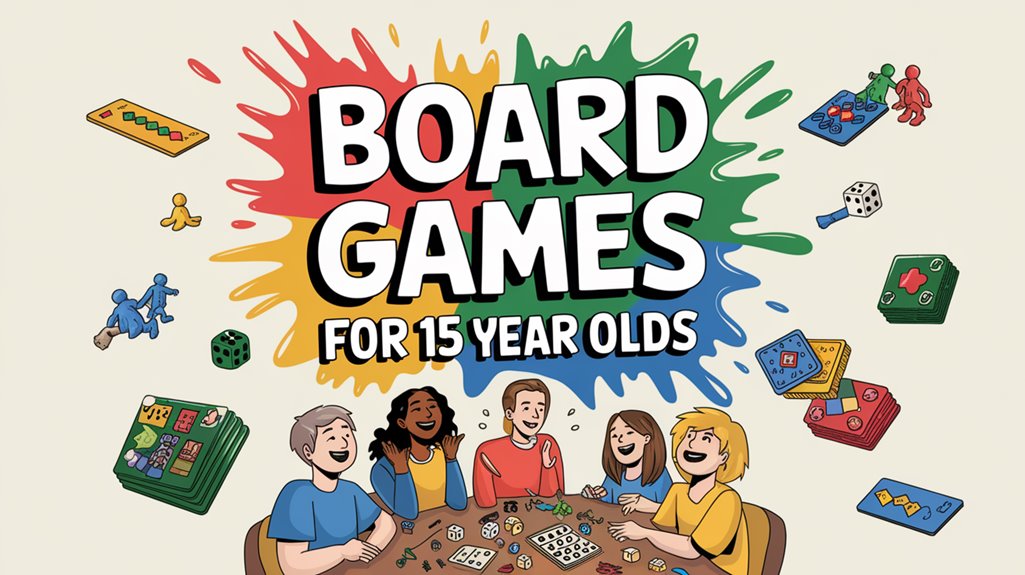Before 2000, baseball-themed board games offered a unique way to engage with America’s pastime. The “All-Star Baseball”, “Strat-O-Matic Baseball” and similar games not only entertained but also fostered community interaction among fans, sparking discussions about player statistics and game strategies. Their enduring popularity can be attributed to a combination of nostalgia, the depth of the gameplay mechanics, and the ability to connect with the real-world sport, which has influenced the design of future baseball-themed games.
All-Star Baseball (1941)
All-Star Baseball, launched in 1941 by former major league player Ethan Allen, is a landmark in sports-themed gaming. Designed for 2 to 4 players, the game typically lasts around 45 minutes to an hour, making it accessible for a quick match or a lengthy tournament.
The gameplay centers around a batting simulation mechanism that employs a spinner and player disks, each representing real-life statistics in key categories such as home runs, triples, and strikeouts. Players build their teams using a mix of contemporary stars and legendary players like Babe Ruth, adding a nostalgic dimension to the experience. While it follows the fundamental rules of major league baseball, the game streamlines certain aspects—such as detailed pitching and defensive strategies—focusing primarily on the hitters’ performance to determine outcomes.
Players utilize strategy discs for advanced plays, allowing for a layer of tactical depth. The rotating scoreboard helps keep track of runs and outs, requiring players to maintain meticulous records throughout the game. All-Star Baseball not only fosters a competitive spirit but also immerses fans in the excitement of baseball, all within a structured and engaging format.
APBA Pro Baseball (1951)
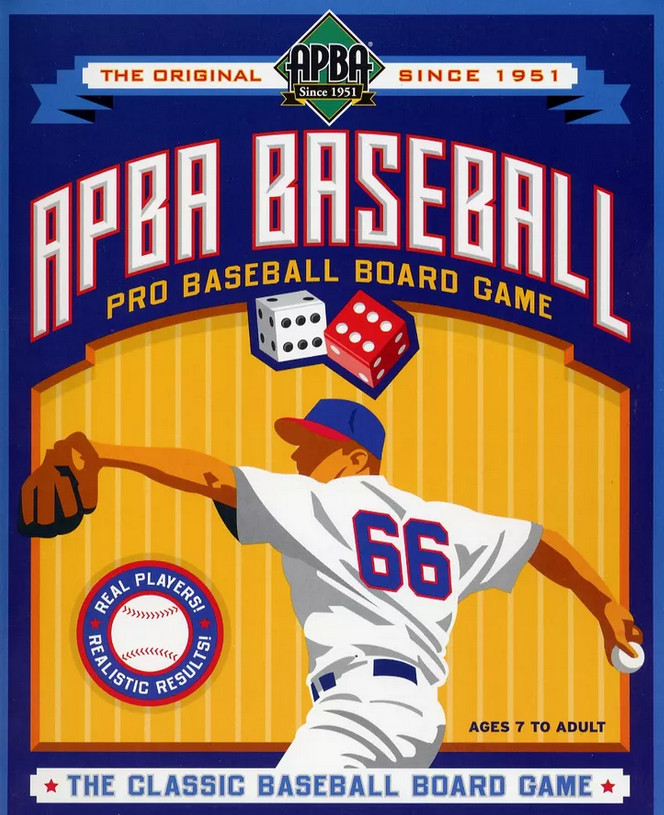
Emerging in 1951, APBA Pro Baseball stands out as a significant advancement in sports simulation games. This game allows 1 to 8 players to take on the roles of managers, engaging with a roster of 600 real players from 30 Major League Baseball teams. Each session typically lasts between 1 to 3 hours, providing an immersive experience in baseball management.
The core mechanics involve using meticulously crafted player cards, which reflect actual performances from players’ careers, derived from over 50 years of play-testing. Each card quantifies a player’s statistics, enabling strategic decision-making based on real-life data. Players can choose to manage existing teams or create custom leagues, allowing for diverse gameplay and strategic depth.
APBA Pro Baseball’s gameplay revolves around dice rolls to determine the outcomes of plays, which are influenced by the player cards in use. This mechanic ensures that every game is unique, with the potential for surprises based on the statistical probabilities encapsulated in the cards.
The game has evolved over the years, incorporating vibrant graphics on the player cards and a streamlined rulebook that balances fundamental guidelines with practical tips, making it accessible for newcomers while retaining depth for seasoned players. Overall, APBA Pro Baseball is not just about winning or losing; it’s a comprehensive celebration of baseball management and strategy.
Baseball Strategy (1960)
Launched in 1960, Baseball Strategy offers an immersive experience for 2 to 8 players, with gameplay typically lasting between 2 to 4 hours. Players assume the roles of batters, pitchers, and managers, engaging in a blend of competitive gameplay and psychological tactics that reflect the nuances of real baseball.
Key features of Baseball Strategy include:
- Psychological Warfare: The game employs a double-blind decision-making system, where players must anticipate and counter their opponents’ moves, adding layers of mental strategy.
- Realistic Gameplay: Players will experience the excitement of executing pivotal plays, such as a bases-clearing double, while also grappling with the disappointment of missed chances.
- Series Play Rules: Rules are structured to ensure pitchers receive adequate rest, facilitating a complete and realistic baseball series experience.
- Dynamic Strategies: Participants can select from a wide array of offensive and defensive maneuvers, including stealing bases, bunting, and choosing pitch types, which significantly enhances strategic depth.
Baseball Strategy is designed for those ready to embrace competition and complexity. It provides baseball enthusiasts with a thrilling platform to strategize and engage in the sport they love.
Strat-O-Matic Baseball (1962)
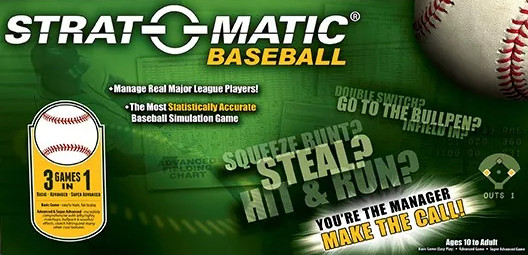
Strat-O-Matic Baseball, launched in 1962, is renowned for its precise simulation of Major League Baseball. The game includes pitcher and batter cards that are intricately designed with statistical probabilities. This allows players to replicate the actual performance outcomes of players from the represented season.
In Strat-O-Matic, 1 to 4 players take on the roles of team managers, making pivotal decisions like setting batting orders, choosing starting pitchers, and employing various in-game strategies. Players can execute hit-and-runs, steals, intentional walks, and defensive substitutions, all of which enhance the managerial experience. Each game session typically lasts around 2 to 3 hours, depending on the number of players and the complexity of decisions made.
The game operates on a combination of dice rolls and player card statistics, creating a unique blend of chance and strategy. Players roll dice to determine play outcomes based on the match-up between the batter’s and pitcher’s cards. This results in a wide range of realistic scenarios that reflect actual baseball play.
Strat-O-Matic releases new player card sets annually based on the previous season, along with special collections that highlight baseball legends. This game not only entertains but also provides a deep understanding of baseball strategy and statistics.
Statis Pro Baseball (1971)
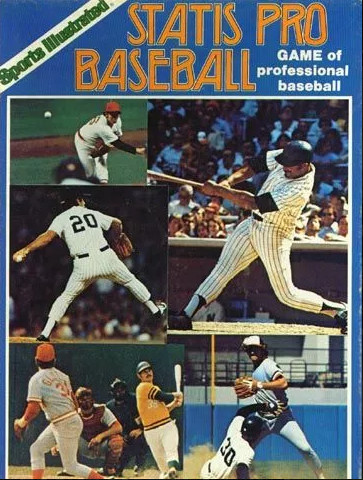
Statis Pro Baseball, launched in 1971, stands out for its detailed simulation of baseball, capturing the intricacies of the sport. The game accommodates 2 players, typically allowing for quick, engaging sessions with each full 9-inning game taking 30 minutes or less.
Key features include:
- Player Cards: Each player card encompasses an entire season’s statistics, detailing individual pitchers and batters, their positions, and game participation.
- Fast Action Cards (FAC): The game employs 98 FACs to resolve plays, introducing a dynamic aspect with special results tailored for clutch situations and unusual plays.
- Managerial Strategies: Players take on the role of managers, making tactical decisions such as executing sacrifice bunts or attempting stolen bases, which adds depth to the gameplay.
- Customizability: Production of the game ended in 1992 due to royalty disputes. However, players can still create custom cards and access fan-generated seasons online, ensuring the game’s legacy continues.
Statis Pro Baseball combines intricate mechanics with an immersive experience, making it a beloved choice among baseball fans.
Ball Park Baseball (1971)
Developed by Professor Charles Sidman in the early 1960s, Ball Park Baseball is a comprehensive simulation of baseball that features teams and players from 1894 through the 2006 season. The game accommodates 1 to 4 players and typically lasts around 2 to 3 hours, providing an in-depth gaming experience.
Ball Park Baseball utilizes a random number generator between 1 and 50 to dictate gameplay outcomes. Numbers 1 through 25 determine batter performance, while numbers 26 through 50 assess pitcher effectiveness. Every player in the game is assigned unique ratings that reflect their specific skills. These include batting strength, arm strength, fielding ability, and running speed. Pitchers also have ratings for fielding and their ability to control base runners, contributing to the strategic depth of the game.
A prominent aspect of Ball Park Baseball is its intricate ballpark charts, which depict the dimensions and unique characteristics of historical stadiums. This feature adds an additional layer of realism to the game. It allows players to experience the distinct advantages and challenges posed by different ballparks.
While the game offers a richly detailed and tactical approach to baseball, players may find the rulebook somewhat unclear, which can complicate the learning process. Nevertheless, Ball Park Baseball stands out as a respected option for fans looking for an authentic and strategic representation of America’s pastime.
Sports Illustrated Baseball (1972)
Released in 1972, Sports Illustrated Baseball marked a significant advancement in tabletop baseball gaming by incorporating complete rosters of 25 players per team. This feature allowed for a more authentic management experience, closely mirroring the dynamics of running a real baseball team. The game upgraded from tri-fold charts to double-sided color charts, which improved usability during play.
Key features of Sports Illustrated Baseball include:
- Comprehensive Player Roster: Each team comprises 25 players, reflecting actual Major League rosters and allowing for strategic depth in gameplay.
- User-Friendly Charts: Double-sided color charts enable players to easily reference statistics and manage their teams, enhancing the overall gaming experience.
- All-Time All-Star Team Charts: Sixteen charts showcase the top players from each franchise, facilitating historical matchups and adding a nostalgic element.
- Specialized Dice Mechanics: The game employs unique 10-39 dice that introduce an element of chance while emphasizing tactical decision-making. The game is designed for 2 players and typically takes around 2-3 hours to complete. It offers a detailed and engaging experience for baseball enthusiasts.
Replay Baseball (1973)
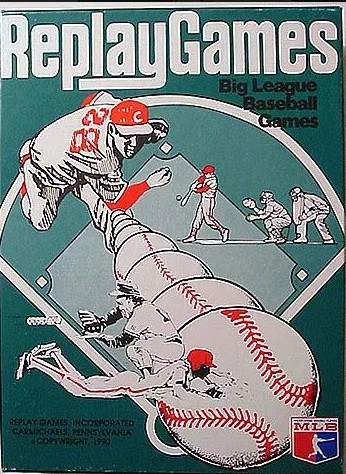
Replay Baseball, launched in 1973, enhances the tabletop baseball gaming experience with its innovative mechanics that allow for a detailed simulation of professional baseball. Designed for 1-2 players, the game typically takes about 1-2 hours to complete. Players select their lineups and pitchers. They then use three dice to determine game outcomes through a numerical column and result number system. This method intricately incorporates fielding skills, running speed, and pitching effectiveness into the gameplay.
The game features an extensive array of season sets, spanning from 1894 to the present, providing players with a wealth of historical context. Some players prefer card-based games over chart-based resolution systems. They argue that relying on charts can lead to predictability in gameplay. This may result in a lack of distinct player abilities, detracting from the overall immersive experience.
The computer version of Replay Baseball is recognized for its advanced functionality, including a comprehensive encyclopedia that enriches gameplay. However, some users have raised concerns regarding technical support, expressing dissatisfaction with the responsiveness of assistance provided. Despite these issues, Replay Baseball continues to be a compelling option for gamers seeking a detailed and engaging baseball simulation experience.
Dynasty League Baseball (1985)
Dynasty League Baseball, launched in 1985, is a highly regarded baseball simulation game that offers an engaging experience for both casual and serious players. It builds upon its predecessor, Pursue the Pennant, and introduces numerous features that enhance its realism and strategic depth.
Key aspects of Dynasty League Baseball include:
- Player Participation: The game accommodates 1 to 8 players, allowing for both solo play and multiplayer sessions, making it versatile for different gaming environments.
- Playtime: A typical game session lasts between 1 to 3 hours, depending on the number of players and their familiarity with the rules.
- Two Sets of Rules: It offers both a basic rulebook and an advanced one. This caters to different skill levels and preferences, ensuring accessibility for newcomers while providing depth for seasoned players.
- Detailed Player Statistics: Players utilize cards featuring statistics from the 1984 season, which encapsulate various performance metrics, including batting averages, home runs, and pitching stats, contributing to a more authentic gameplay experience.
- Advanced Game Mechanics: The design includes factors like pitcher’s fatigue and clutch hitting. It also emphasizes the execution of complex plays, enabling strategic decision-making that can greatly impact game outcomes.
- Dynamic Play: The game allows players to manage teams and make in-game decisions. They can also adapt strategies based on real-time performance and statistical analysis, which further immerses them in the baseball experience.
- Exceptional Customer Support: Designer Michael Cieslinski’s dedication to customer service ensures players receive timely assistance and updates.
With its intricate mechanics and engaging gameplay, Dynasty League Baseball is a standout choice for enthusiasts. Its blend of strategy, realism, and user-friendly design solidifies its status as a must-try for anyone passionate about baseball simulation games.
